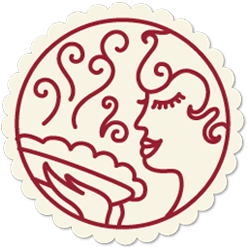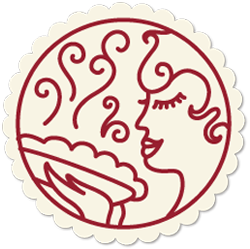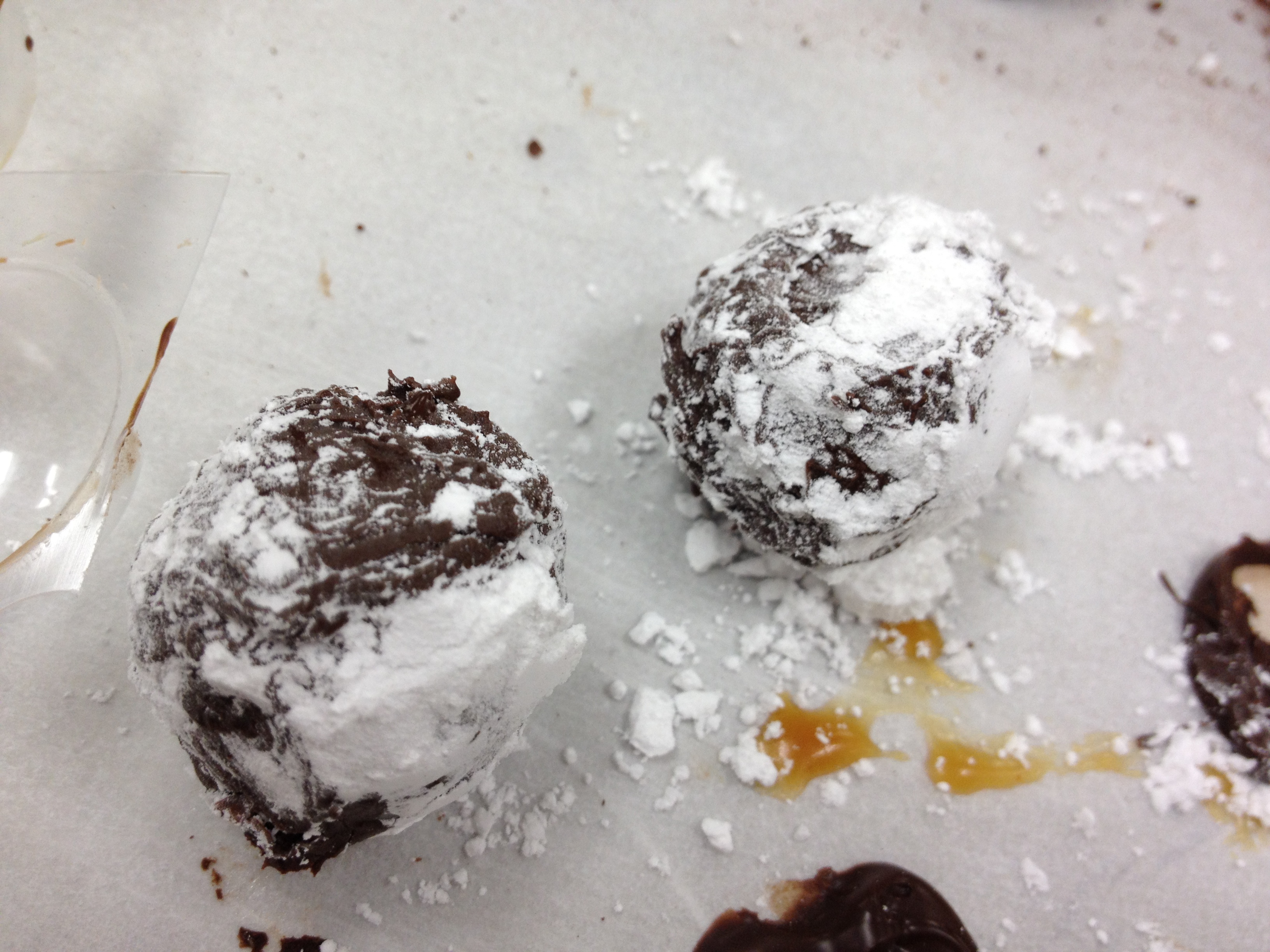 We didn’t suck at it after all.
We didn’t suck at it after all.
That was Chef Claude’s conclusion after our second session of tempering chocolate in our pastry techniques class at L’Academie de Cuisine. He waited until the three-hour session was over to tell us that given what he had seen last week, he figured we’d be a total loss when it came to tempering chocolate. But our second whack at it revived the optimist buried deep inside this weathered veteran of the White House’s kitchen and other distinguished pastry operations. Maybe we could learn to do this after all. 🙂
It wasn’t hard to figure out why Chef Claude was skeptical going into week two. Last week’s introduction to tempering chocolate was a clueless and frustrating experience that generated far more questions than answers. But this week, something seemed to click.
Some of us dispensed with chef’s inclination to be all earthy and anti-gadget: we broke out our candy thermometers. My pastry partner, Michael, it turns out, is the sort that goes about with three of them at all times. Who knew? So he was particularly handy on this evening. He whipped out all three of his thermometers and shared them with our classmates. Suddenly people were pulling out candy thermometers left and right. (Silly me: I left mine at home.)
Chef Claude kindly tolerated all this gadgetry. He saw, after all, that we needed some kind of help. God knows we had been 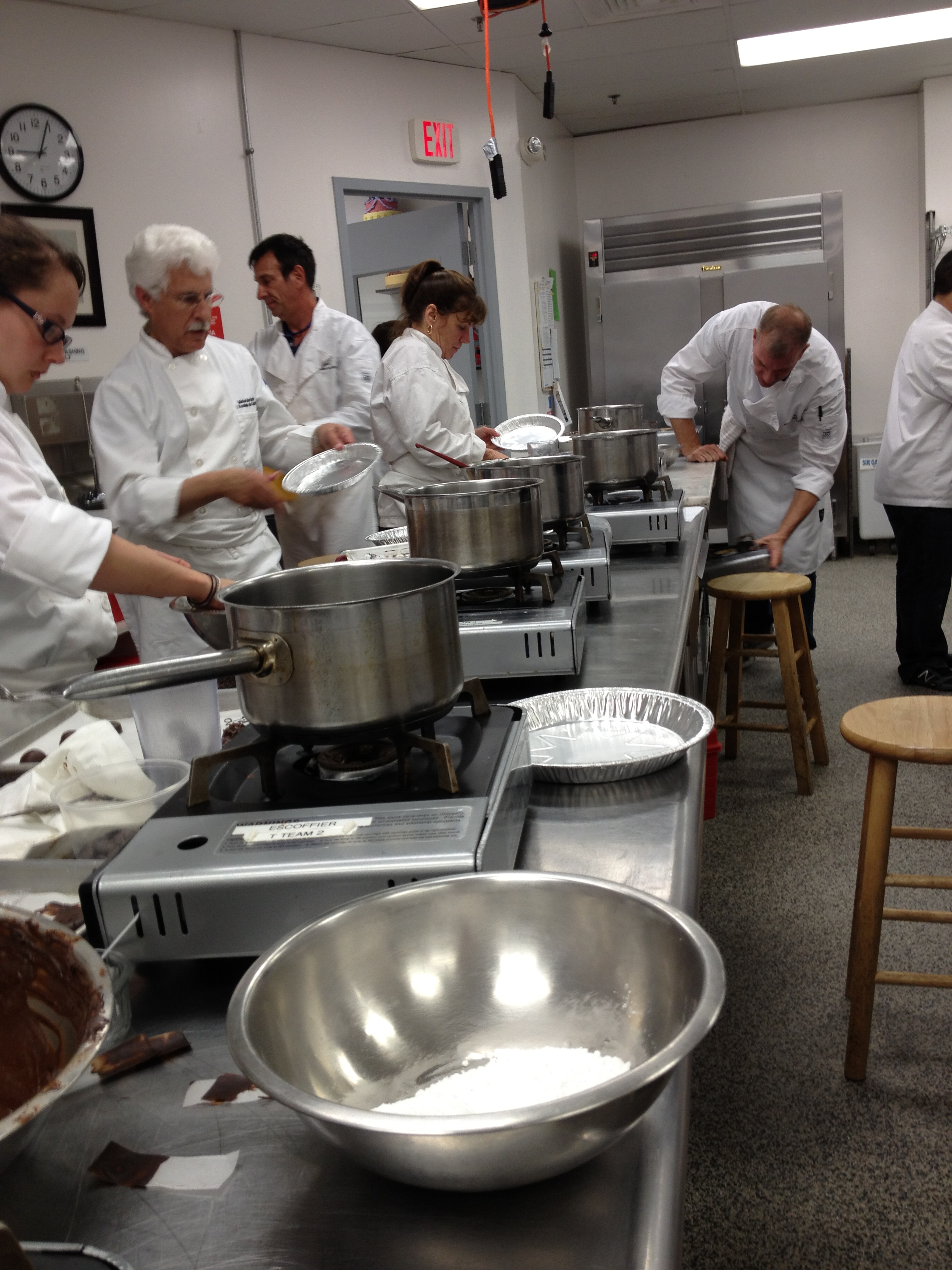 hopeless the previous week trying to tell the difference in the three required temperatures of the tempering-chocolate journey by simply dabbing the chocolate on our chins as he showed us. Several decades of experience made this simple for him; the rest of us needed divine intervention or technology.
hopeless the previous week trying to tell the difference in the three required temperatures of the tempering-chocolate journey by simply dabbing the chocolate on our chins as he showed us. Several decades of experience made this simple for him; the rest of us needed divine intervention or technology.
Technology proved quite helpful. What it did for me is tutor me: it provided a hard number for what I was feeling when I dabbed the chocolate on my chin (or my wrist, as I did so many times with little children to check their foreheads for fever). Each time I got the thermometer to tell me the chocolate had reached an important point, I dabbed it on my skin to see what that felt like. And at each point, I began to get it. This is what 122 degrees feels like. This is what 84 degrees feels like, and bringing it up just a little bit–86-88 for the working temperature–feels like this.
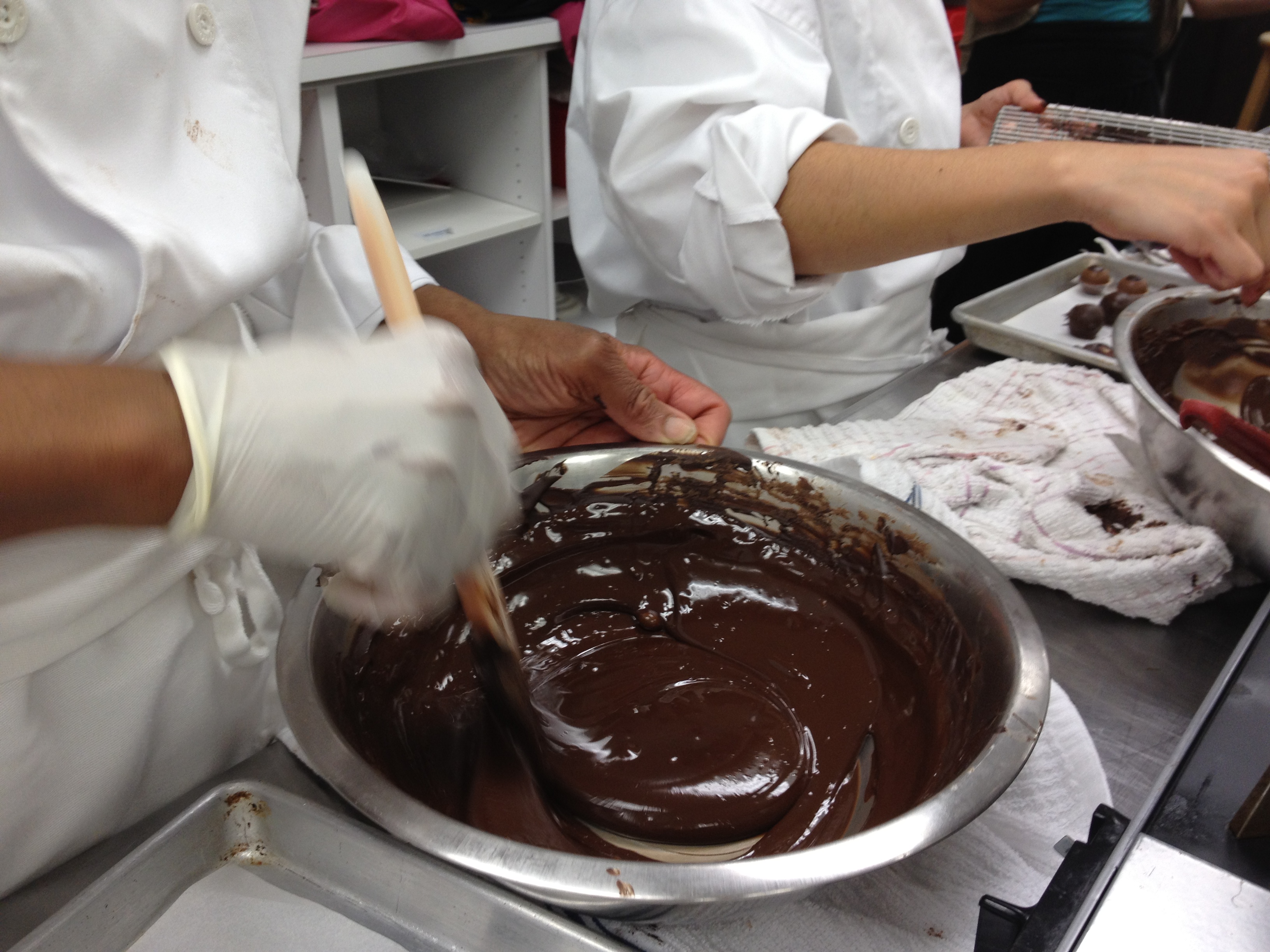 I’m not saying I mastered the process of tempering chocolate. I have a long way to go. But this time, at least I began to get the feel for the different temperatures, and I began to be able to identify some of the traits chocolate should show on a test strip of parchment paper when it has been properly tempered. It should set nicely, be shiny, resist a fingerprint, and it should curl the paper just a little bit.
I’m not saying I mastered the process of tempering chocolate. I have a long way to go. But this time, at least I began to get the feel for the different temperatures, and I began to be able to identify some of the traits chocolate should show on a test strip of parchment paper when it has been properly tempered. It should set nicely, be shiny, resist a fingerprint, and it should curl the paper just a little bit.
We practiced working with the tempered chocolate by filling some pre-made truffles that chef supplied. We piped ganache into some, and caramel into others, and then used the tempered chocolate to seal the holes we had just filled.
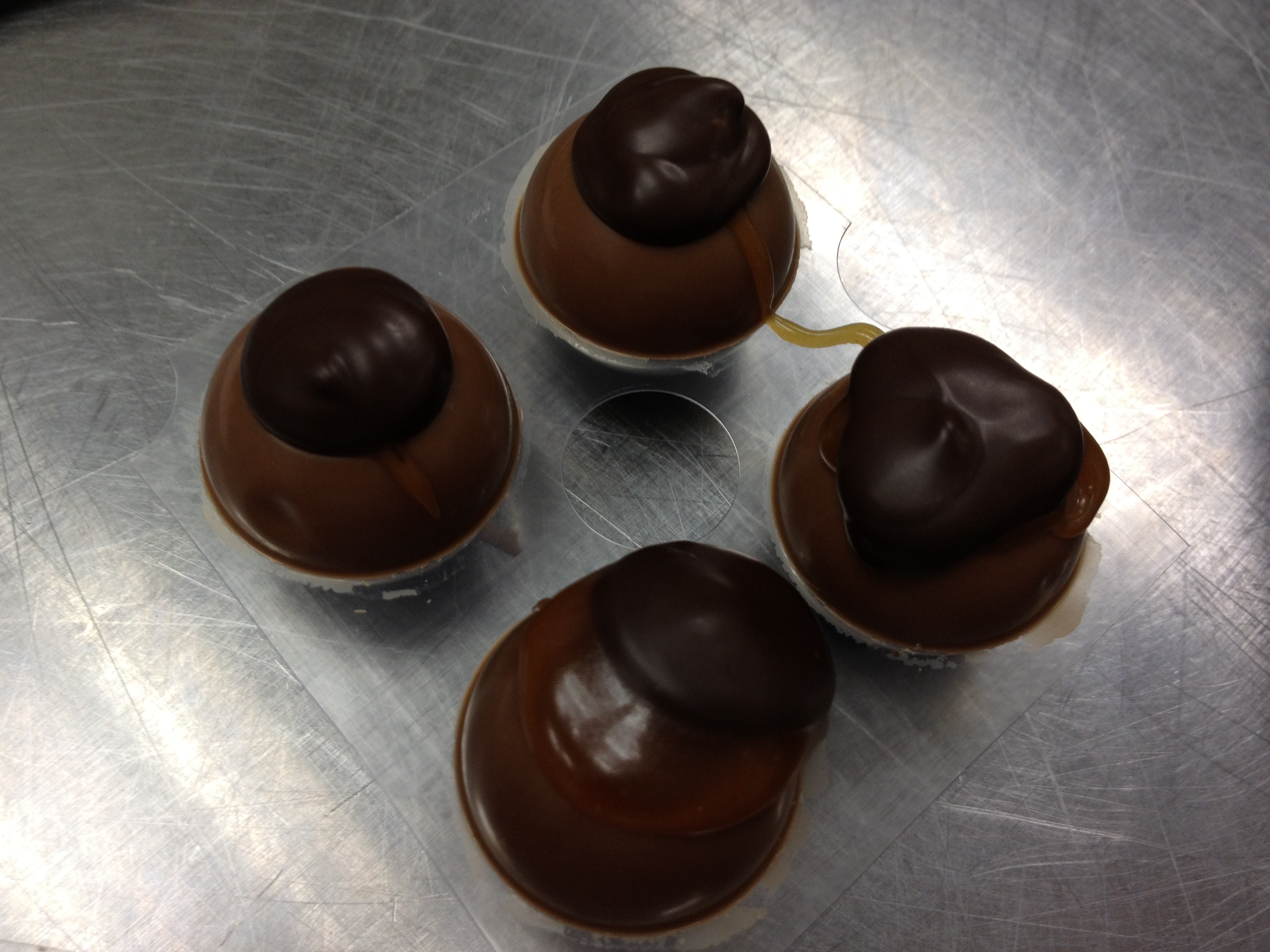 When those had set up, we dropped them in melted chocolate to coat them. Chef taught us an interesting trick to draw the excess chocolate off the dipped truffle: as you raise it from the bowl of melted chocolate, touch the newly coated truffle to the surface of the chocolate, over and over. The chocolate remaining in the bowl drags the excess chocolate off the truffle you’ve just coated.
When those had set up, we dropped them in melted chocolate to coat them. Chef taught us an interesting trick to draw the excess chocolate off the dipped truffle: as you raise it from the bowl of melted chocolate, touch the newly coated truffle to the surface of the chocolate, over and over. The chocolate remaining in the bowl drags the excess chocolate off the truffle you’ve just coated.
We finished the caramel truffles with powdered sugar, and the ganache ones with cocoa powder. 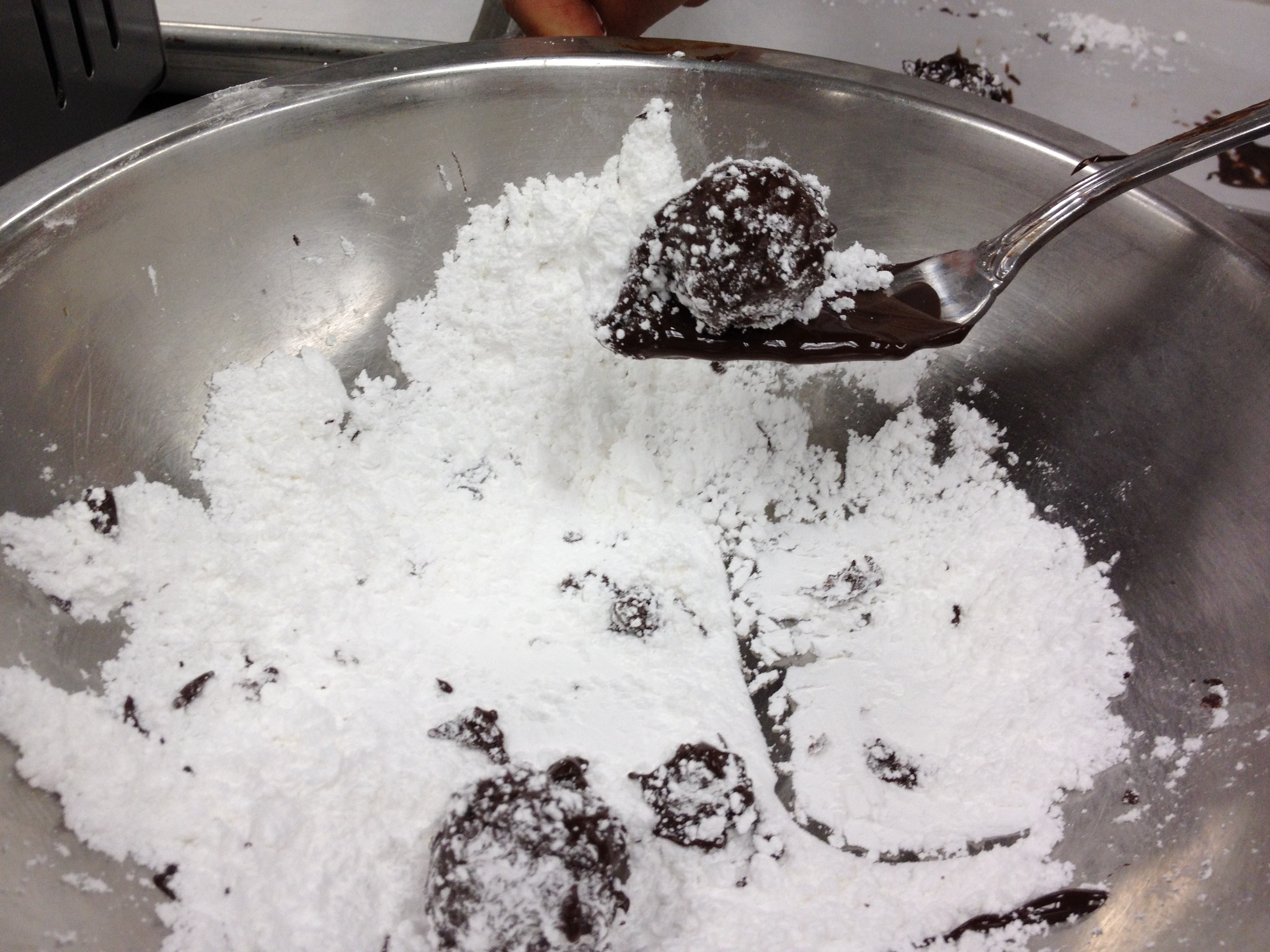
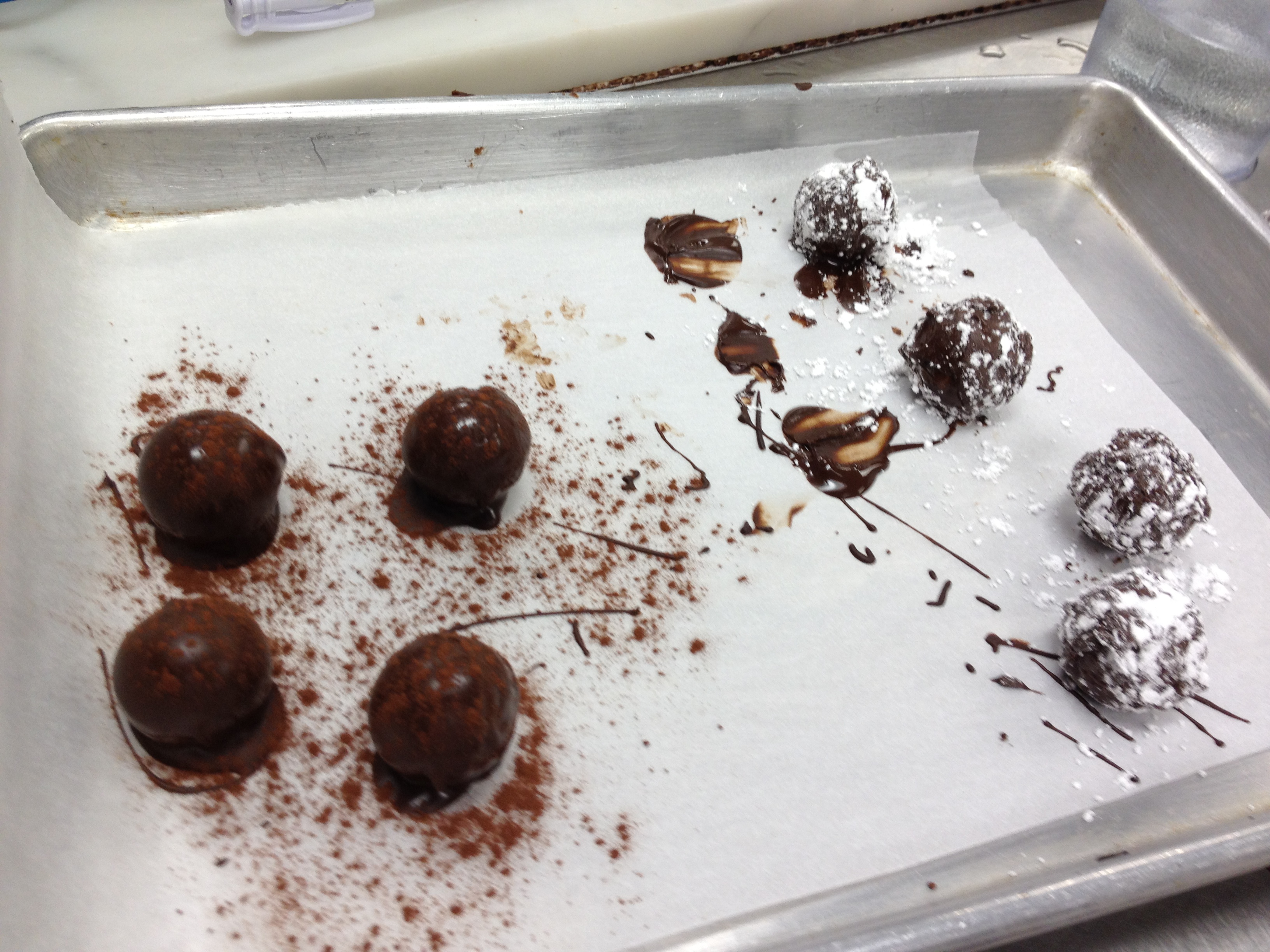 Chef Claude also showed us how to make mendiants, a little compendium of chocolate, nuts and dried fruit named for four monastic orders, as Michael found out by going home and researching the name. Ours were delicious little disks of chocolate studded with pistachios, almonds, apricots and candied ginger. Deliciously sweet and spicy.
Chef Claude also showed us how to make mendiants, a little compendium of chocolate, nuts and dried fruit named for four monastic orders, as Michael found out by going home and researching the name. Ours were delicious little disks of chocolate studded with pistachios, almonds, apricots and candied ginger. Deliciously sweet and spicy.
We all went home with bellies full of truffles, mendiants and chocolate-covered marzipan disks (oh, I forgot to tell you about those. We dipped the disks. Pretty straightforward.). Happy to eat such lovely things, and happy that we weren’t total chocolate-tempering morons after all.

